The rise of digital art, epitomized by phenomena like Rare Pepes, represents a significant shift in the art world. Challenging traditional institutions and collectors, it democratizes art creation and distribution, allowing broader artist participation and direct audience engagement. However, this shift also introduces volatility, questions of permanence, and complex intellectual property issues, reshaping the art market’s future landscape.
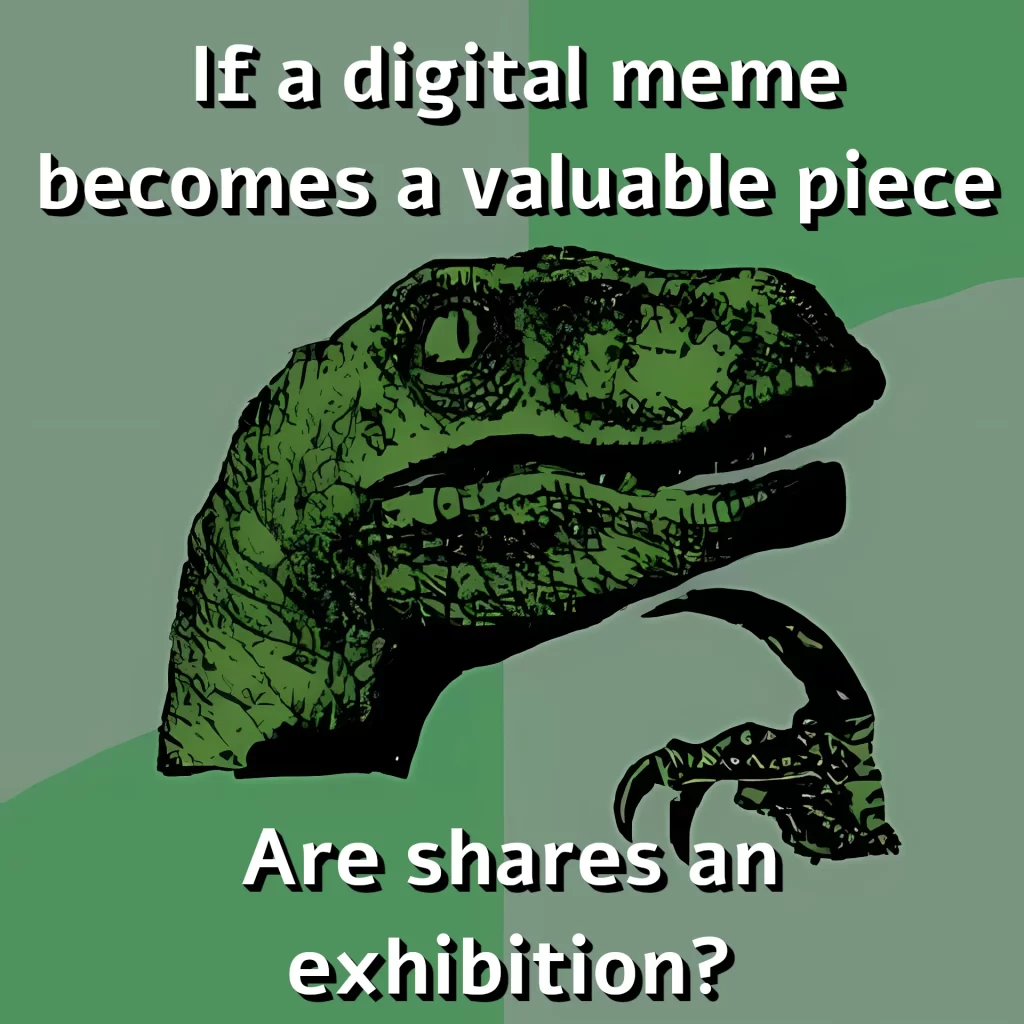
If a digital meme becomes a valuable piece of art, does that mean every share, like, or retweet is an art exhibition?
So What, Why Is This Important?
It allows for direct engagement between artists and audiences, bypassing traditional curation and distribution channels. However, it also introduces issues like market volatility, concerns about the permanence of digital mediums, and complex intellectual property dynamics. This shift is reshaping the art market, creating new opportunities and challenges for artists, collectors, and institutions.
The integration of digital art into the traditional art world represents a significant cultural and technological shift. It challenges the norms of art creation, distribution, and valuation, inviting both traditional and new artists to adapt and innovate in response to these changes. The digital art movement is a testament to the evolving nature of artistic expression and the ongoing dialogue between tradition and innovation in the art world.
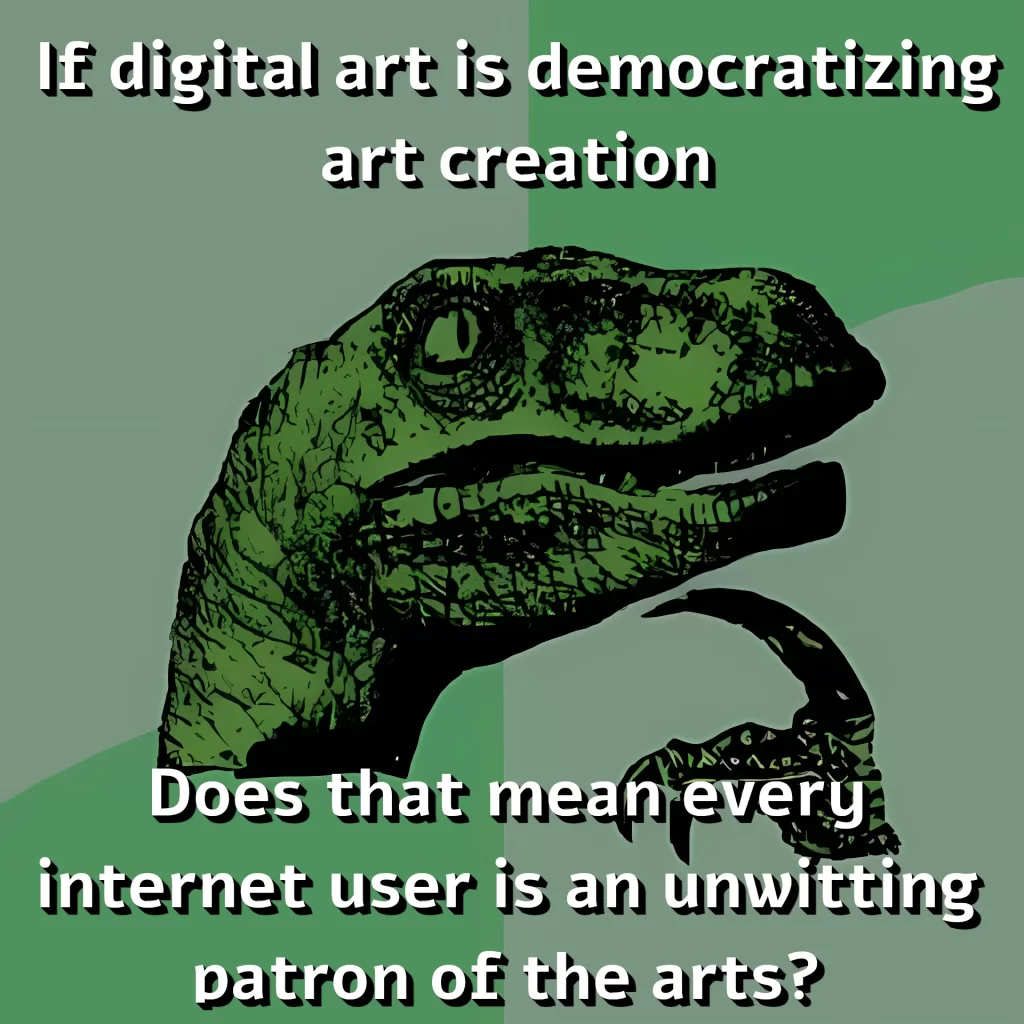
If digital art is democratizing art creation, does that mean every internet user is an unwitting patron of the arts?
Pros and Cons of digital art challenging traditional institutions
Pros:
- Democratizes art: Provides more artists access to the market.
- Innovation: Encourages new forms and methods.
- Accessibility: Reaches a global audience easily.
- Authenticity: Blockchain for ownership and originality.
Cons:
- Market Volatility: Digital art markets can be unstable.
- Permanence: Digital works risk obsolescence with technology changes.
- Value Perception: Struggles for acceptance as ‘real’ art.
- Intellectual Property Issues: More complex copyright concerns.
Artists can directly reach audiences through online platforms, bypassing traditional galleries and curators. This direct access democratizes art, allowing a wider range of artists to gain recognition. Furthermore, the use of blockchain technology in digital art, like NFTs, introduces new ways of proving ownership and authenticity, potentially shifting the focus from physical to digital collections. This challenges the traditional art market’s structure and valuation methods.
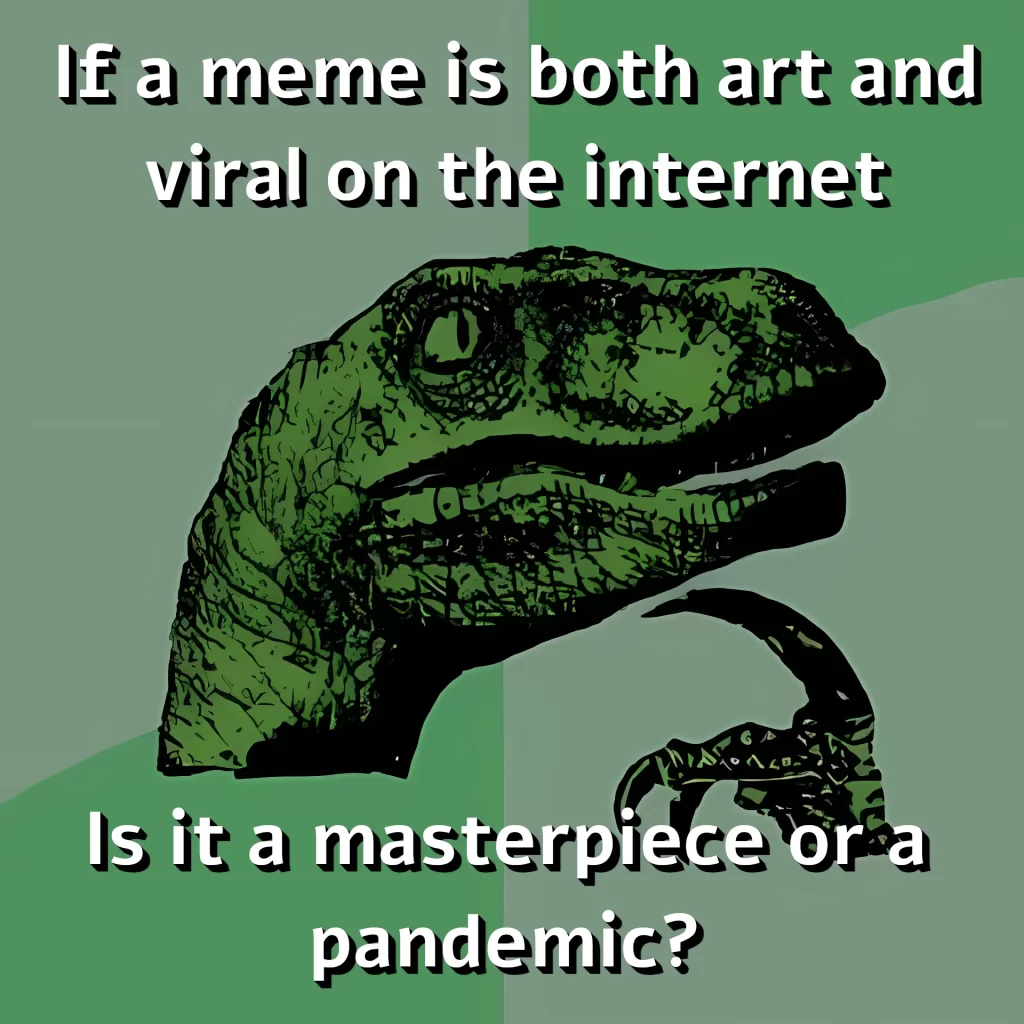
If a meme is both art and viral on the internet, is it a masterpiece or a pandemic?
The Value
The value of digital art and memes is influenced by a complex mix of factors: cultural impact, popularity within online communities, artistic innovation, and sometimes rarity, especially with blockchain-based art like NFTs. The economic value in a marketplace can fluctuate based on demand, collector interest, and the artist’s reputation. In some cases, scarcity can be artificially created through limited releases, further influencing value. This process differs significantly from traditional art valuation.
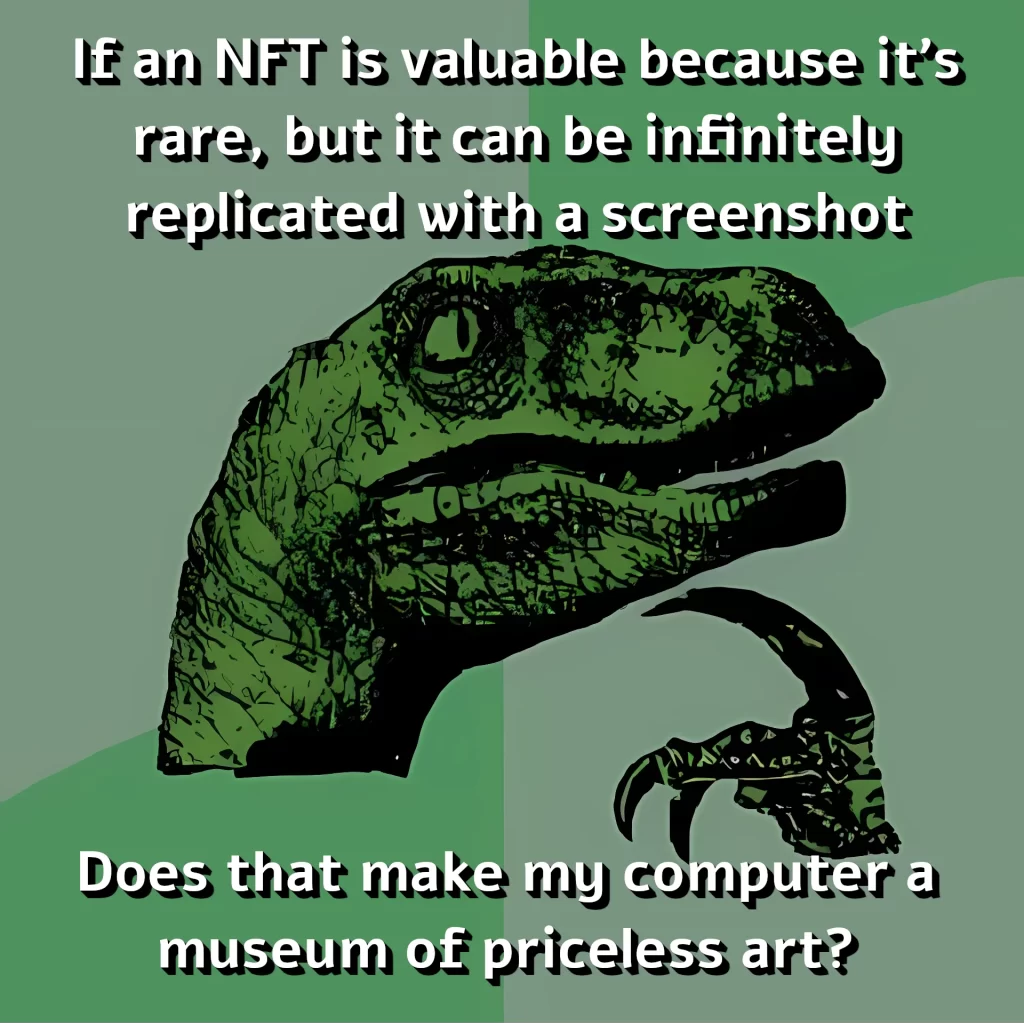
If an NFT is valuable because it’s rare, but it can be infinitely replicated with a screenshot, does that make my computer a museum of priceless art?
Artificial scarcity is not new
Artificial scarcity in digital art, particularly with NFTs, is created by limiting the number of copies available. For instance, an artist might release a digital artwork with only 10 unique, verifiable tokens (NFTs) associated with it. This limitation mimics the scarcity of physical art in the digital space. Buyers often value such limited releases higher due to their rarity. The scarcity, combined with the artwork’s popularity and cultural impact, drives up its perceived value and potential resale value in the market.
The Movement
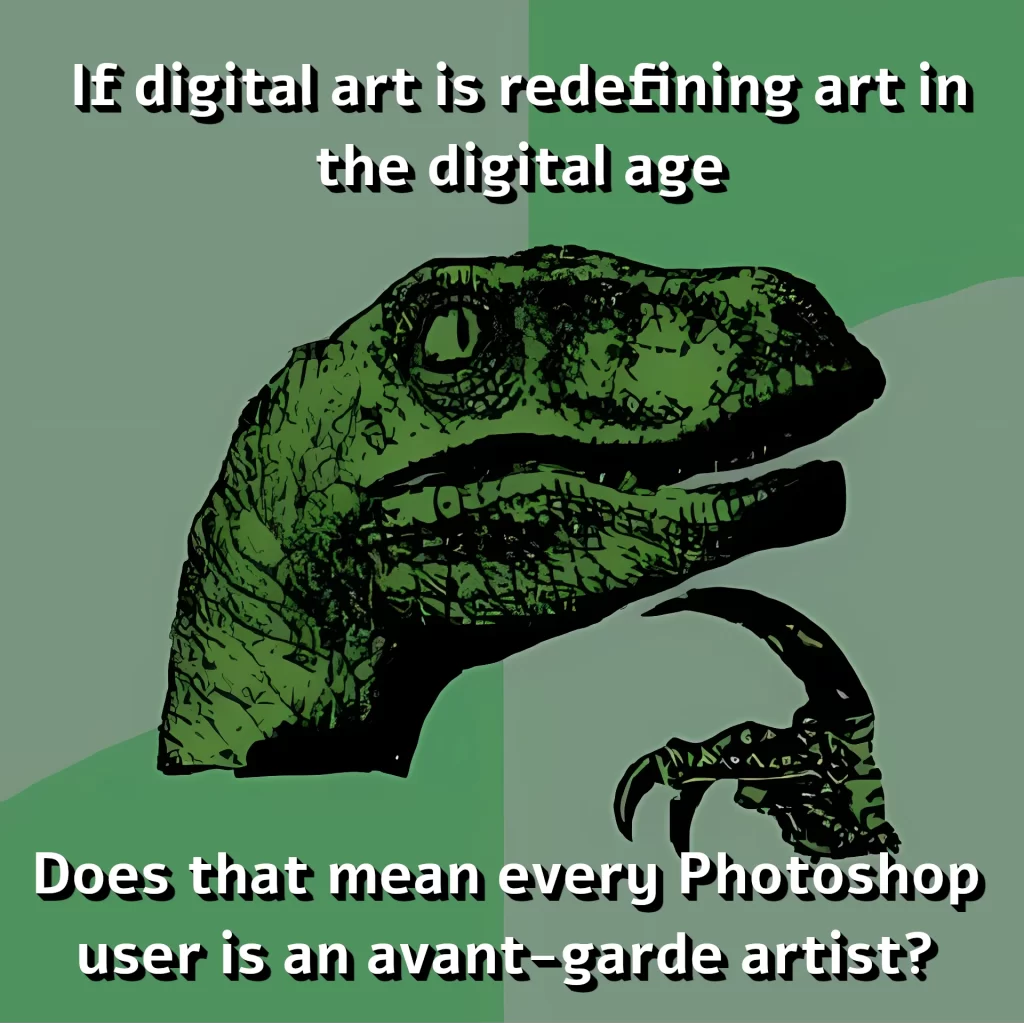
If digital art is redefining art in the digital age, does that mean every Photoshop user is an avant-garde artist?
This movement is characterized by the use of digital technology as a primary medium for creating, sharing, and experiencing art. It challenges traditional artistic mediums and practices, redefining what art can be in the digital age. The digital art movement encompasses a wide range of practices, including digital painting, 3D modeling, and the creation of NFTs, reflecting the diverse ways technology is integrated into artistic expression.
You might adore them. You may despise them. Either way, memes are part of our contemporary Internet environment, and they are almost impossible to ignore.
https://theartofeducation.edu/2015/03/3-ways-to-use-memes-in-the-art-room/






